The Secret Ingredient is ...Empowerment
Getting under the skin of purposeful, inspiring and helpful beauty brands to decode what sets them apart and how we design empowerment into brands and experiences.

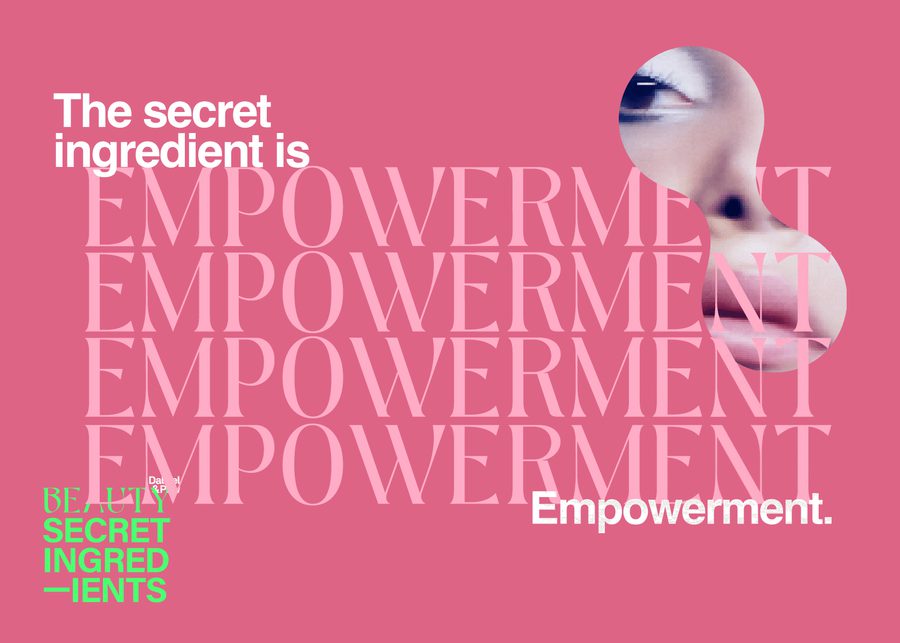
Getting under the skin of purposeful, inspiring and helpful beauty brands to decode what sets them apart and how we design empowerment into brands and experiences.


In this chapter of our Beauty Secret Ingredients series, we discuss our third ingredient, EMPOWERMENT, and look at Brands with processes and personalities that lead the sector and change behaviours.
Empowerment is having something of a moment. Capturing the cultural zeitgeist of David’s standing up to Goliath, there is a wave of feeling that we as individuals can - well - be individual and define our own narratives. Across all walks of life, independence of spirit and mind is becoming more widely celebrated over rule-abiding conformity. With the Beauty industry historically synonymous with promoting a very rigid, airbrushed, ableist, and Eurocentric brand of conformity, brands risk being pigeonholed as archaic relics of ‘old beauty’ if they don’t keep up with cultural feeling and offer more scope for individuality.
So how exactly do we define empowerment?
Put simply, empowerment is the process of becoming more confident, especially concerning one’s life and one’s rights. Sounds great, right? Powerful stuff. But, as beauty brands, how do we encourage this process in our customers? And in doing so, how do we ensure that we remain honest, authentic, and meaningful? We love helpful alliteration and believe that following a clear process of the ‘3D’s’ - Democratise, Destigmatise, and Demystify - creates a clear framework for empowerment that brands can tailor to their ethos. Below we explore;
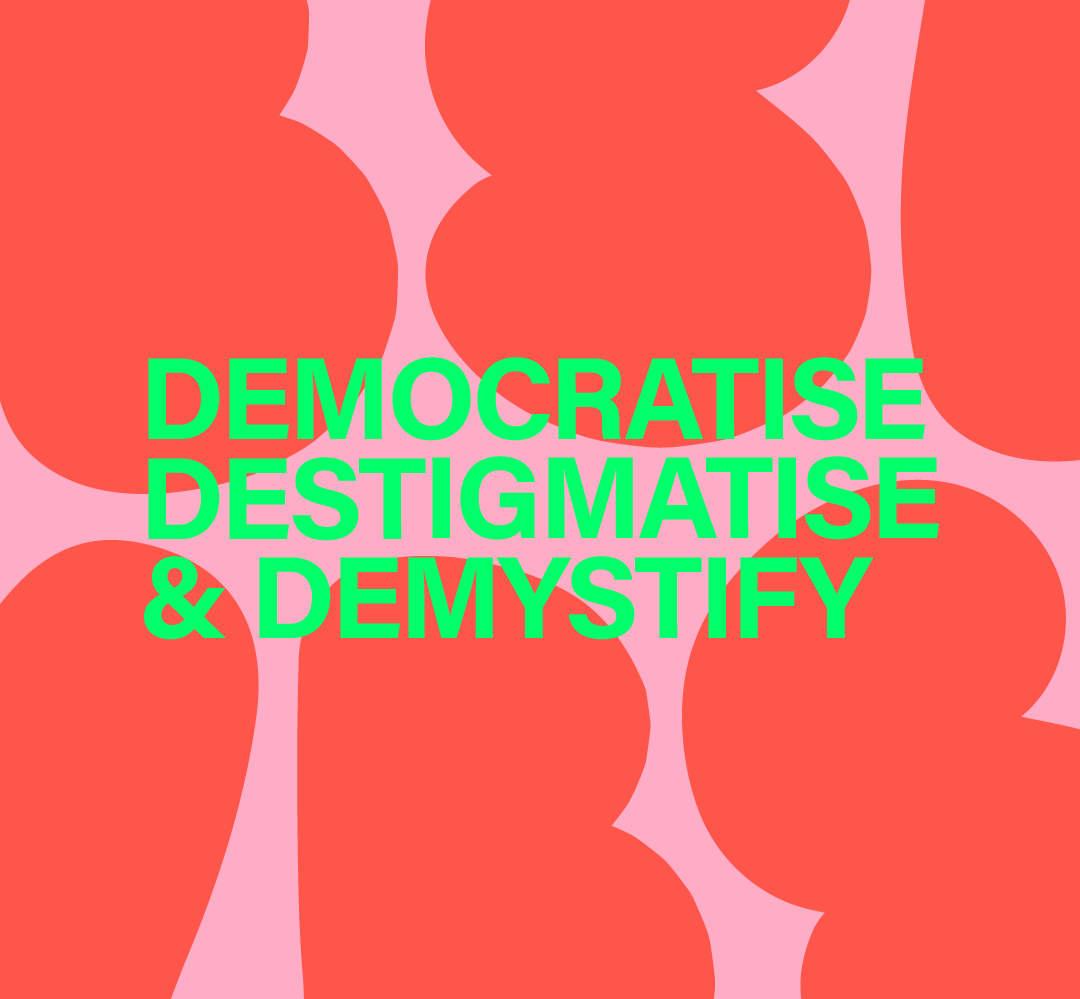
The rise of TikTok and other social platforms created a perfect storm...
Why empowerment now?
Covid 19 has become something of a catch-all for explaining recent shifts in human behaviour but concerning attitudes toward the beauty industry the impact has been undeniable. Perhaps like no other time in history, the mainstream media has been routinely questioned, challenged, and undermined. The role of the ‘expert’ has, for the short term at least, lost its status as an unquestionable purveyor of truth.
At the same time, the rise of TikTok and other social platforms - necessitated by the physical isolation of COVID-19 - created a perfect storm. Infinite information sources, an explosion in consumer-to-consumer interaction, and a growing wealth of individual content creators challenged the status quo forever.
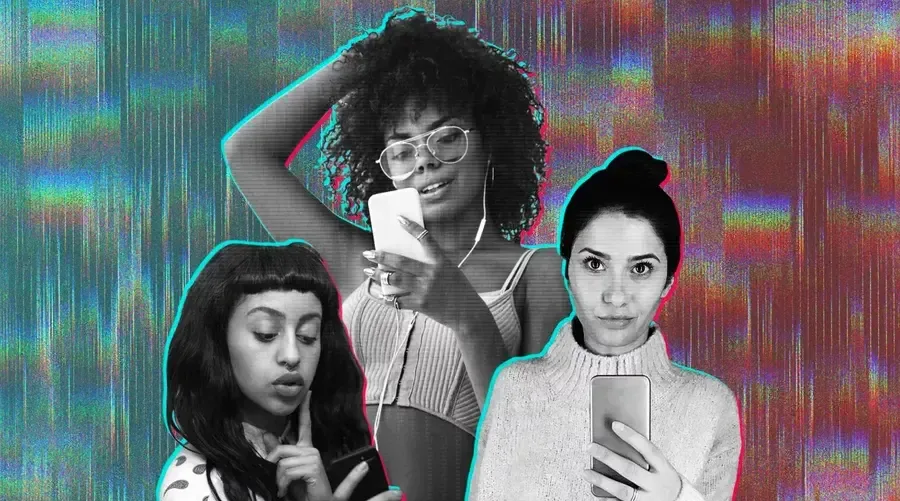
This is particularly relevant to the beauty industry where, for many years, large brands had been left unchallenged to determine what, and more importantly who fitted their narrow definition of ‘beauty’. Even a few years ago, trends and beauty standards were almost exclusively set by the industry and willingly lapped up by a customer who saw very little opportunity to challenge these or create a dialogue.
All this has now changed and the contemporary customer expects a seat at the table to determine and shape future trends and needs to be empowered to do so. Brands no longer act as trendsetters but respond to change instead of driving it. Those who engage with, understand, and anticipate their customers' wants and needs are outperforming the rest. So how can we help to ensure we stay ahead of the curve?
Democratising a culture of clique - VIP access for all
Whilst over simplistic, there is a lot of truth in the phrase ‘you cannot be what you cannot see’ and, within the beauty industry, unless you are within the 2% of the global population who are white, blonde, tall and slim, 10 years ago you probably barely saw yourself represented at all and felt disenfranchised and ‘othered’. This has begun to change but the fact it remains a topic of conversation shows that there is still a long way to go.
In terms of visual representation, brands like Fenty, with their ‘beauty for all’ motto, are leading the way. With an impressive 40-shade foundation range and gender-neutral vision, they promote diversity with authenticity. In campaigns, it feels as if models have been selected based on an attitude rather than a particular visual aesthetic. It is interesting to note that the word ‘inclusive’ doesn’t feature in their brand messaging, instead opting for a ‘show, don’t tell’ approach. It’s not that it’s ‘wrong’ to call out an inclusive approach in brand marketing but it always needs to be backed up with convincing action, it will be painfully obvious to the customer if, to use a beauty analogy, inclusivity is only skin-deep - it must be the foundation, not this season’s lipstick shade.
It will be painfully obvious to the customer if, to use a beauty analogy, inclusivity is only skin-deep - it must be the foundation, not this season’s lipstick shade.

As well as visual representation, the beauty industry needs to address who the actual products are accessible to. In both the UK and US around 1 in 4 adults have some form of disability and yet are almost entirely absent from beauty marketing and products designed with disability in mind are almost non-existent. US brand Guide Beauty (launched in 2020 by Terri Bryant, and now boasting prominent MS campaigner Selma Blair as COO) hopes to change this. Their make-up implements are designed specifically for those with limited motor function and have large, easy to hold, handles and flexible tips. Their website and Instagram page offer customer-uploaded beauty tutorials, having the dual benefit of offering disability-specific application advice and connecting potentially isolated customers with each other, creating a community.
Another make-up tool brand, Kohl Creatives, gives a portion of proceeds to Kohl Kares, their charity which offers free make-up workshops to those transitioning gender, undergoing chemotherapy, burn victims, and those with existing conditions such as alopecia. They also offer online tutorials for those with motor disabilities. Their website shop uses slick, high-concept beauty imagery that wouldn’t be out of place in leading fashion publications and creates a feeling of glamour and aspiration that so often gets lost behind the functionality of designing for disability.
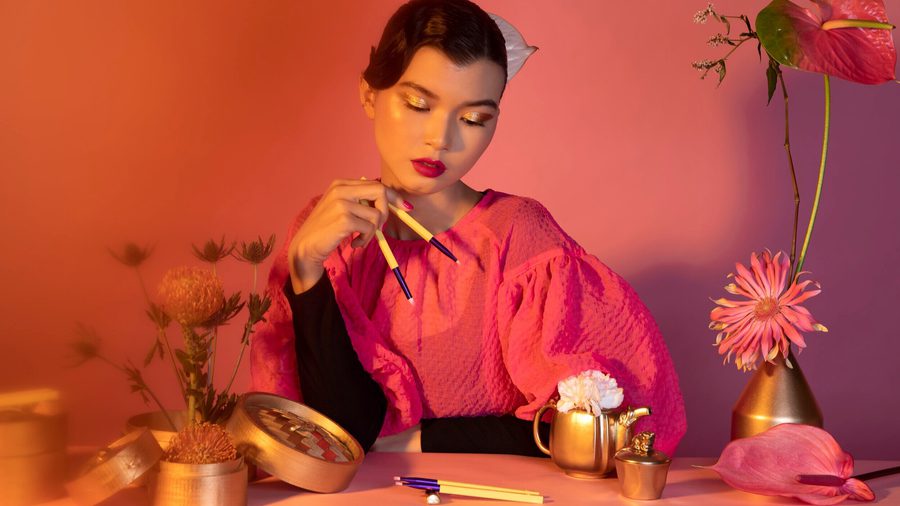
“Seeing those with disabilities using beauty products consistently will make it feel less like tokenism, but genuine and will help so many people gain more confidence” Jordan Bone, quadriplegic influencer and disability advocate
Whilst these make up tool examples have a narrow USP, mainstream brands very much play a role in democratising the industry and opening it up to a wider participating audience. Fenty, Dove and Gucci have all run recent campaigns that are inclusive without feeling inauthentic. Influencer Jordan Bone, who was left paralysed from the waist down following an accident, notes that because disability in advertising is “very rare…it often feel(s) somewhat in-genuine. Seeing those with disabilities using beauty products consistently will make it feel less like tokenism”. Brands therefore must continually look to represent a wider market in their visual imagery but ensure to support this with meaningful efforts toward inclusivity. From braille packaging (shout out to Bioderma, L’Occitane and Dr Jart+), to problem solving products such as L’oreal’s motorised lipstick applicator, and the celebrated AI voice enabled make-up assistant launched by Estee Lauder this year, some brands are putting tech advances to good use, but unfortunately these are the minority rather than the norm and much more can be done.
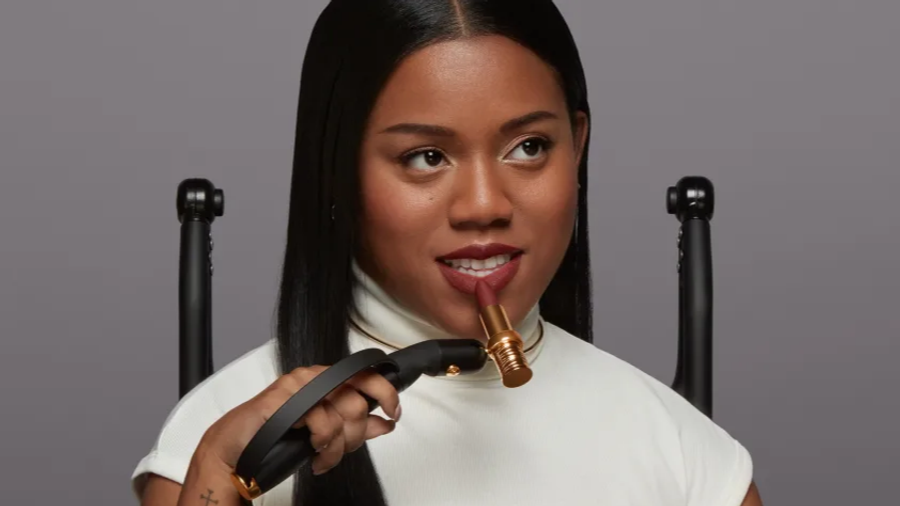
Destigmatising an image-obsessed sector - the redefinition of beauty standards
As well as a democratisation of the Beauty landscape and broadening inclusivity, recent shifts have seen a redefinition of beauty standards themselves to allow more room for the individual and less idealisation of a polished, flawless, aesthetic. Trendsetting brands are championing self-expression and individuality over the search for ‘perfect’.
In terms of product development and marketing, this is manifesting itself as beauty products increasingly being advertised as multi-purpose rather than designed to create one set look. Brands are also looking toward more relatable influencers as opposed to models or celebrities to demonstrate these.
Marketing is now also increasingly laced with a good pinch of reality regarding beauty goals - acknowledging that a traditional beauty ideal is not only unachievable for most but, refreshingly, not desired by many. An example of a brand getting it right is the feminine grooming offer Billie, which launched with the tagline ‘for when (and if) you feel like shaving’. Those two bracketed words are completely opposed to traditional beauty standards and very firmly hand control back to the individual to define their own femininity. The brand tone of voice throughout is of a millennial BFF and feels entirely authentic and convention-challenging without appearing worthy. Their un-retouched photography shows actual body hair (shock-horror) and was gasp-inducing when it launched back in 2017 and still sits just outside the mainstream six years on.
Consumers are buying beauty products to make themselves feel good and choosing to wear them (or not) on their own terms.

Starface, launched in 2019, is another brand to capitalise on the desire to challenge convention and metaphorically stick two-fingers up at ‘traditional’ beauty. Their bright yellow, star-shaped spot patches have something of a Gen Z cult following and run in the face of the view that a blemish must be shamefully concealed at all costs. Skin-positive empowerment at its finest.
Far from putting consumers off or making them question a brand’s credentials, the relaxing in idealistic standards and the use of ‘imperfect’ models paradoxically make a brand feel more credible. Today’s consumers, particularly Gen Z, are interested in brands that feel real, honest, and attainable - not elitist and exclusive. Importantly, consumers are buying beauty products to make themselves feel good and choosing to wear them (or not) on their own terms. Consumers are not buying products because they don’t feel good without them - and brands need to adjust their marketing to this mindset.
Demystifying the complex world of aesthetics - pulling back the curtain on the Beauty world’s secrets
The final step towards empowerment is to allow your customer behind the curtain. Historically, brands have achieved status by creating an air of mystique; secret recipes, bamboozling science, and austere sales assistants. Communication was exclusively one way - brand to customer, rigid and inflexible.
Think back to the 90s when beauty and haircare brands were consistently advertised with new ‘wonder’ ingredients designed to entice customers. The naming of these ingredients was usually a patented amalgamation of two beauty-related words smashed together; they sounded convincing but there was no substance - and nothing you could actually research to see if the product might be right for you. In the current climate, successful beauty brands offer full ingredient transparency (without the made-up names!), often referencing not only ingredients but a ‘free from’ list and the science and lab tests behind the product. Skincare brand Codex, founded by Canadian Dr Barbara Paldus, prides itself on conducting clinical trials and publishing the data. The ‘Research Room’ section of their website has downloadable articles on subjects from product efficacy to safety and testing, allowing the customer to feel empowered to make the right choice for them.
Another company offering process transparency is Molton Brown, we worked with them to help surface their sustainability credentials in-store beginning with their Bluewater offering and following with a full refit of their Regent St flagship in 2021. The latter coincided with both the launch of their Return, Recycle, Reward scheme (which sees customers rewarded for returning empty bottles for recycling in-store) and their refill packs, which reduce plastic waste and decrease carbon emissions associated with distribution.
Alongside product transparency, Molton Brown is on a further mission when it comes to demystifying the industry - particularly concerning the, often elitist, world of fragrance. Fragrance shopping - like wine - relies on technical terminology and in-depth knowledge (do you know your top note from your heart and base? Are you woody or floral?). This can feel intimidating and overwhelming and Molton Brown wanted to create a range that felt more approachable. Working closely with the Client team, we developed an approach that was intuitive, personal, and inclusive. Using a digital device, the customer selects preferred images from a series of choices and the Fragrance Finder then offers the user their own personality profile and matches this with a scent as part of a full sensory experience. It is an introduction into fragrance that is fun and interactive and designed to encourage a dialogue between customers and sales associates, breaking down barriers. Molton Brown Global Vice President, Beatrice Descorps, says it is about “positioning human connection and feelings to the forefront”.
“Our new vision…(is) a reinvention of traditional customer experiences; position human connection and feelings to the forefront” Beatrice Descorps, Global VP, Marketing, Molton Brown.
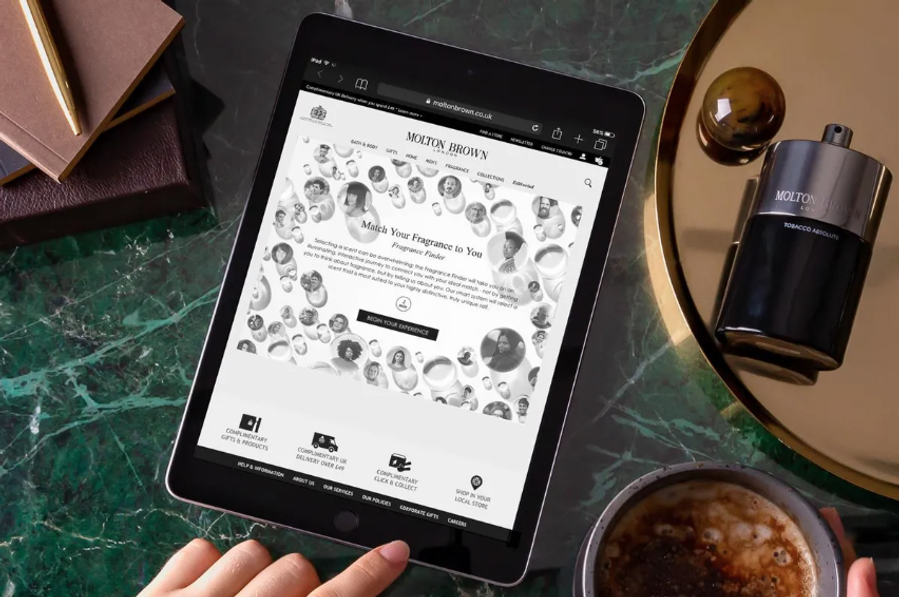
From ingredients to sustainability to ethics, today’s customers require ‘access all areas’ before committing their loyalty. They expect to be treated as an equal of a brand and want full transparency to make their own decisions on where and what they purchase.
So what learnings can we take from the 3Ds of empowerment?
Today’s consumer has been on a journey towards individuality. The homogenised idea of a single beauty gold standard no longer holds credence. Brands that seek to empower consumers to define their own path have the edge required to succeed.
Here are our key takeouts:
1. Don’t be afraid to challenge traditional beauty standards and offer a more attainable alternative
2. Words must always be backed by action - skin-deep inclusivity won’t wash
3. Knowledge is power - sharing it won’t weaken your brand but create a stronger connection between you and your customer
What's your secret ingredient..?
We’d love to hear your thoughts on what makes a beauty secret ingredient and discover your favourite brands that express their sense of care and help people. Head to our Linkedin or Instagram to share your thoughts in the comments or email us at hello@dalziel-pow.com.
Our next secret ingredient will be Storytelling - shining a spotlight on how brands can articulate and share their authentic stories to better engage with their audiences.

The first ever SXSW London took over Shoreditch this month, offering a wealth of inspiration and insights across tech, business and culture. We share our thinking into how it can return even bigger and better for 2026.

